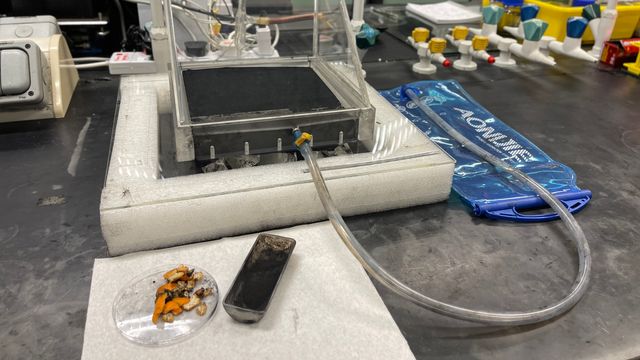How Do You Make a Water Purifier From Fruit Waste?


Want to listen to this article for FREE?
Complete the form below to unlock access to ALL audio articles.
Singapore scientists have demonstrated that fruit peels can be used to purify water, an innovation that can be employed in remote areas and disaster zones where electricity access is limited.
The Nanotech team, led by Assistant Professor Edison Ang, based at Natural Sciences and Science Education, National Institute of Education at Nanyang Technological University of Singapore, published their findings in Chemistry A European Journal under the 2022 Young Chemists special collection.
Turning waste into wealth
Every year, approximately 20,000 tonnes of fruit waste is produced in Singapore, with the majority generated by the fruit juicing industry, which uses 50% of the fruit while discarding the remainder, such as fruit peel, as waste. This inspired Dr. Edison Ang. While others see waste, he sees a source of wealth because wastes are free resources that can be converted into valuable products, in this case MXene. MXene is a class of material with excellent light-to-heat conversion properties that can be used to create solar stills for water purification using renewable solar energy. This solar still can be made portable and easily deployed in remote areas where electricity access is limited.
MXene can be made from fruit waste for solar desalination
Using a two-step carbonization method, common fruit wastes such as coconut husks, orange peels and banana peels were used to create MXene materials. These MXene materials were then used to create a solar absorber for use in a solar still for water desalination.
The key findings of the paper were:
- MXenes derived from fruit wastes demonstrated an excellent light-to-heat conversion efficiency of 90%, which is nearly 30% higher than that of the commercial solar absorber, improving the water production rate by approximately 50% over the existing solar still.
- In this work, MXene material was less expensive than commercial alternatives because one of the reactant sources was obtained for free from fruit waste.
- The purified water produced by the homemade solar still prototype met the World Health Organization (WHO) drinking water standard.
Recycle waste, create wealth and produce clean water
Dr. Edison’s primary research interest is to explore different organic waste materials and convert them into valuable materials for water purification using solar stills. In previous research, his team produced graphite from plastic waste for a similar purpose and this work was published in the Journal of Materials Chemistry A under the 2022 Emerging Investigator collection theme.
Both studies demonstrated that organic wastes can be converted into value-added two-dimensional (2D) materials such as MXene and graphite. Furthermore, their unique honeycomb structure allows for improved light-to-heat conversion efficiency, while the interlayers of the 2D structure provide multiple channels for rapid water production.
The negative impact of waste pollution can be reduced by recycling and reusing organic wastes, as well as converting them into value-added materials such as carbon, which reduces the mining of natural carbon resources and the cost of MXene or graphite materials. As a result, both the environment and the economy will greatly benefit.
The main challenge is identifying appropriate materials for an eco-friendly and more efficient solar still. Organic wastes are typically mixed with other impurities, which are not organic in nature. As a result, the use of existing technologies to produce pure materials is limited. Future work is required to sort out the waste material types, such as using artificial intelligence in conjunction with machine learning to improve the quality of the waste management process.
New materials for making batteries
Graphite is known to be a crucial ingredient in the manufacture of commercial Li-ion batteries, which are used in everything from smartphones to electric vehicles. Like graphite, MXenes are not only naturally conductive but also have a 2D structure, which makes them useful for storing charges in batteries and could soon be used in the production of batteries. Therefore, the MXene produced from fruit waste has potential applications far beyond water purification.
Reference: Aizudin M, Sudha MK, Goei R, Lua SK, Pottammel RP, Tok AIY, Ang EH. Sustainable production of molybdenum carbide (MXene) from fruit wastes for improved solar evaporation. Chem. Eur. J. 2022;29(2): e202203184. doi:10.1002/chem.202203184
